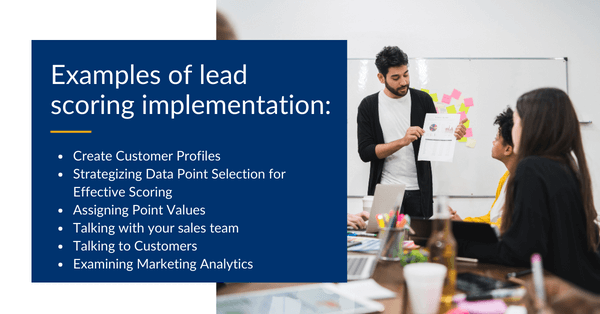Lead Scoring. The ability to track a lead is crucial for business owners who want to convert them into customers. The thing is, you can’t score a lead with just any tool, you need a sophisticated and intuitive tool for that. In this blog, we will look at what lead scoring is, how to track your leads, and how to convert them into customers using lead scoring.
What is Lead Scoring
Lead scoring is a way of measuring how interested a potential customer is in your product or service. A lead score is a number that represents the sum total of all of the information that you know about a lead. This information can include everything from the professional information that they’ve submitted to how they’ve interacted with your brand online. The lead score helps sales teams prioritize leads and increases the likelihood that those leads will become customers.
What is the main problem with Lead Scoring?
Having more leads than time to contact them can be a daunting task. If you’re always racing against the clock to stay on top of growing your business, it can be tough trying to prioritize all of your tasks. However, it’s important to remember that even though it may be tempting to try and tackle everything at once, it’s important to focus on quality over quantity. In other words, it’s better to make a few calls and build relationships with potential customers than it is to make a bunch of calls and sound like a robot.
So how do you overcome this:
Automation software can help take some of the guesswork out of understanding which leads are interested in your product or service. By ranking leads based on their level of engagement with your marketing, you can focus more time and energy on prospects who are more likely to make a purchase. With this kind of insight, you’ll be able to send people the right message at exactly the right time.
How does it work:
Automating your lead nurturing process ensures that the right leads aren’t slipping through the cracks. Instead, automation software can send out monthly reminders to those leads who need more time before purchasing from you. This gentle push keeps your business moving toward a sale and reduces the risk of losing potential clients to competitors.
What are some benefits of Lead Scoring?

1. Increase marketing effectiveness:
Lead scoring is a super helpful process that lets you figure out which campaigns create the best leads. Once you know this, you can adjust your marketing strategy to get even more great leads in the future!
2. Enhancing Business Performance through Aligned Sales and Marketing Strategies:
In the absence of an effective lead scoring system, misalignment between sales and marketing can occur. Establishing clear lead scoring rules can help ensure that every lead passed on to sales meets the required qualifications. This can enhance the relationship between the two departments and facilitate their collaborative efforts.
3. Improved Income:
Implementing lead scoring can greatly assist sales departments in identifying and pursuing qualified leads, leading to increased revenue. Additionally, lead scoring can streamline various organizational processes, resulting in greater efficiency. One of the most significant benefits of lead scoring is its ease of implementation, making it accessible to businesses of all sizes.
What are some examples of lead scoring implementation?

Below are some examples of factors to take into account when crafting your own scoring model. Even though lead scoring is quite individualized, there are a few examples of factors to take into account when building your own score model.
1. Create Customer Profiles:
To optimize lead scoring, it is essential to understand the attributes that indicate a suitable prospect for your products and services. This requires gathering insights into the characteristics of your perfect customer. The greater your understanding of these attributes, the more accurate and effective your lead scoring efforts will be.
2. Strategizing Data Point Selection for Effective Scoring:
To effectively prioritize leads, it is essential to consider multiple types of criteria. After identifying the ideal buyer, analyzing different factors can help fine-tune the lead prioritization process for improved accuracy and efficiency.
To effectively prioritize leads, it is essential to consider multiple types of criteria. After identifying the ideal buyer, analyzing different factors can help fine-tune the lead prioritization process for improved accuracy and efficiency. One type of criteria is related to the lead’s characteristics, such as:
- Location
- Age
- Industry Department
- Work Department.
Behavioral criteria, on the other hand are:
- Email Opening
- Email subscribing,
- Number of web visits,
- Participation in free trials,
- Form Submitting,
- Downloading of free content,
- Engagement in Social Media,
- Registration in webinars.
No two businesses are the same, so it only makes sense that their sales-readiness scoring systems would be different, too. You have to make sure that the criteria you’re using to score potential sales opportunities are relevant to how your company actually sells. There’s no easy answer here, but thinking about how your business’ sales process works can help you come up with a system that works well for you.

3. Assigning Point Values:
Scoring criteria aren’t one size fits all. You have to think about what you’re trying to achieve: in this case, finding out which qualities and actions are associated with a successful outcome. To do that, you need to give data points a number value.
4. Talking with your sales team:
Sales representatives have frequent customer interactions, allowing them to identify potential ideal customers based on their unique insights. These insights may not have been included in your buyer personalities. However, another way is to examine your CRM data. Analyzing the leads that your sales team chooses to follow up, as well as those they do not, can provide valuable information that can help refine your buyer personalities.
5. Talking to Customers:
When it comes to understanding the detailed ins and outs of your customer’s buying journey, they’ll always be the best source of information. So why not go straight to the source and ask a portion of your customers about their experiences? By speaking to them, you’ll start to see some things in common that will come in handy for scoring leads in the future.
6. Examining Marketing Analytics:
Analyzing past marketing campaign data can provide valuable insights into what strategies were effective and where adjustments may be necessary. For example, if a particular type of content has a high conversion rate, prioritizing leads who engage with that content in future campaigns can increase the likelihood of generating buyers. By focusing efforts on successful campaign tactics, organizations can optimize lead prioritization and achieve better results.
Establish the Point at Which a Lead Becomes Qualified for a sale.

After assigning scores to each data point, the total score of a lead is calculated. However, determining the range of scores that indicates a lead is “sales-ready” can be challenging and may require testing and analysis during the initial implementation of lead scoring.
To begin, we recommend implementing lead scores without a minimum value and requesting that sales follow up with leads equally for a designated testing period. After the test period, analyze the follow-up and lead scores to identify a clear-cut threshold where leads are no longer likely to convert into customers.
Once the threshold is established, sales and marketing should collaborate to create appropriate outreach strategies for leads within certain score ranges. For instance, if the analysis reveals that leads with scores below 35 rarely convert into customers, sales can focus on leads with scores above that number. Leads that fall below the threshold can be placed into a lead nurturing program until they become sales-ready.
Conclusion
Lead scoring is a method of assigning different values to different leads based on their level of interest in your product or service. By assigning a value to the leads, you can then email the leads that are most interested in your service first and then gradually email the ones that are less interested once you have already established a relationship. We hope that this blog post has helped you understand lead scoring and how you can use it to your advantage to capture leads and convert them into customers.
Thank you for reading, and I hope you found this post useful!

Before you go, I want to offer you something. It is a coaching program that helps you grow your business to get more leads, make more sales and change the world.
Our weekly coaching calls will help you set goals and track your progress towards them. Our weekly accountability checks will remind you exactly how far along you are in reaching those goals. And our daily support from myself and my team will keep us connected throughout the week so we can answer any questions or concerns that come up as they arise.
It’s time for you to take charge of your own success—we’re here to make sure it happens!
You can read more about it here.
We hope you enjoyed our recent outreach blog and as always should you have any questions feel free to contact me anytime. I’d be happy to discuss this topic further with you.






0 Comments